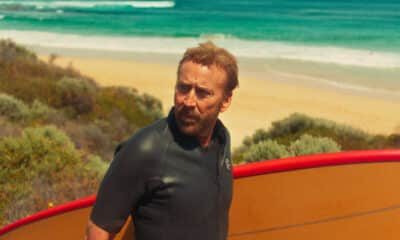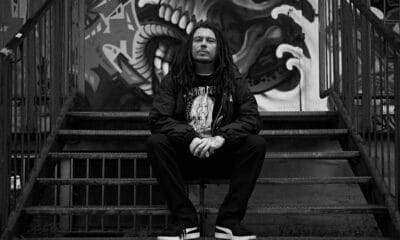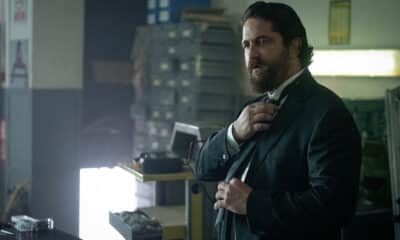
Orson Oblowitz & Zach Avery Interview for Hell is Where the Home is
Hell is Where the Home is got this year’s Arrow Video Frightfest Sunday programme off to a bang. It followed two couples whose weekend away goes deadly awry after an unexpected guest appears. A film which doesn’t rely on cliches, it actually gives our characters a back-story and depth. Those out for needless bludgeoning of flimsy characters won’t find much to enjoy here.
Whilst at Frightfest, we caught-up with two people involved in the film – director Orson Oblowitz, and actor Zach Avery.
So how did the film originate?
ORSON OBLOWITZ: Well it was brought to me by Julio and Diego, my producers. They saw my last film and we talked and we vibed; they came to me with the script and it was very much what I wanted to do. We just developed it from there. We cast Zach; he was the first one cast. We all worked together pretty intensely for a while, as the cast started building, doing re-writes and building characters, researching certain elements of the characters. It was fun because, most often with horror movies, you don’t get to do a ton of actor work, and I felt that we got to do a lot of actor work, which was nice, to make it a drama as well as a horror film.
That’s one of the things that I really liked about it – the characters weren’t your typical horror characters. You got to know their back-story before the chaos happens. Normally you only get to know a two-dimensional version of that character. There’s the bitch, there’s the jock, there’s the whatever, but in this one you did get a sense of characters. Was that something that was important to you both, as an actor and a director?
ZACH AVERY: For sure, I mean that’s something that definitely drew me to it. There’s just so much nuance within the characters that’s exactly like you say, it wasn’t this cookie-cutter layout that we’ve seen all the time. When we worked together, we were really able to mould an experience for the audience where you see that these people are human and going through certain things. Then these external things happen to them, but it is lot about that internal struggle through this also.

Orson Oblowitz & Zach Avery Interview for Hell is Where the Home is
I’m sorry Zach, but I just did not like you’re character, he’s just not a nice guy.
ZA: Honestly that’s a good thing. He’s a dick. He really has done some horrible things (laughs).
OO: Well I think he’s interesting because he’s a guy that is on the surface very likeable, and the nice guy. But then at the same time, he’s clearly made decisions that are clearly wrong and he’s living a life a lie. That’s why it’s so interesting when there’s a scene with him and Fairuza [Balk] where she says, ‘one must not live in bad faith’, that’s where that comes from. She directs that at him. This idea, which is that these characters that live in bad faith and lies and are not honest to who they are, basically pay the price for that one way or another. That’s why I like it. They’re supposed to be complex characters. They’re not all necessarily likeable.
So did you have to do some digging to find his good qualities?
ZA: It’s one of those things where we all, on a daily basis, may do things or have actions that we’re not necessarily proud of. A lot of the time, what we do is, we just push it down and go to surface level until we get caught. Then when you get caught, you feel so bad, but before that you’re just going about your life. That was a piece of Joseph, that so many things in his life he’s bottled down and down and kind of ignored. For me, there’s pieces of my life, not necessarily that bad, but there’s pieces of my life that obviously yeah, I’ve put to the wayside, that I had to draw-up to make it real which wasn’t the easiest thing to do. I think it’s healthy, it’s what we all need to do sometimes.

Orson Oblowitz & Zach Avery Interview for Hell is Where the Home is
I’ve been talking to a lot of film-makers and it seems that the shoot schedules for these films is getting shorter and shorter, how long did you guys have and what was the shoot like?
OO: Twenty-one days.
Okay so you’re kind of in the middle of what others have said.
OO: It was the most I’ve ever had, but that was also a luxury of being in one location. It gave us the stability to spend more time in it. Also our shooting days were shorter, because we were filming chronologically. We were shooting at night in an all glass house. It was the middle of summer that we were shooting, so we were not able to shoot pure twelve hour days. We were shooting nine to ten hour days. So it was interesting because, yes I had more days, but we would have to sometimes very much rush scenes. There’s one scene with Zach, which is at the end, where we had a period of like twenty minutes to shoot the whole scene. You can even see the light start changing as we’re filming, because we have no time until the sun comes up.

Orson Oblowitz & Zach Avery Interview for Hell is Where the Home is
I’m an eighties baby, so I grew-up in the nineties and The Craft is just amazing; you got Fairuza in the film, how did she get involved?
OO: We actually re-wrote the character for her. It was originally written as a man and then we all got together and changed it. We all just discussed that no one is going to let a man in, in the middle of the night, and a woman character like that is much more fun. She was the first person who would we want to work with, and Fairuza was the name. With what she’d been doing, we all had exactly the same thing – The Craft, Return to Oz, I always found so weird and interesting, her in American History X. People also forget, and I can’t remember the exact names of them, but she did a lot of really good independent films in the nineties and noughties. She won an IFC Spirit Award, like she’s actually really done an amazing amount of dramatic work that’s phenomenal. We went out to her and she said she loved the script, she’s very picky and it was an amazing experience. She really was top of the game, amazing to work with, and I know (to Zach) you had a great experience.
ZA: Oh, she was incredible. It was one of those things where you think certain preconceived notions about how someone will be when they come in, and obviously she’s a legend. But she was so collaborative, she wanted to play. She wanted to work out scenes between us, and so it was amazing. I keep saying it, but it really was like a masterclass in acting just watching her. She’s so nuanced and the way that she can do the smallest thing and have the biggest impact, it was a treat.
I also liked the nod to the wicked witch…
OO: The wicked witch, yeah of course. She doesn’t… a big reason you don’t see her that much is because she’s not going to do another witch role. She has a lot of depth. She’s an extremely good actor, honestly, I say that having a lot of high regard for her work. She would tell me in some takes, ‘so Orson do you want me to do something different?’ I’m like, ‘I don’t know what to tell you. You’re phenomenal, what do you want from me?’ She’d be like, ‘well tell me’, so I would have a think and just say ‘do it slower,’ the worst direction you can give someone because I don’t have anything to tell you because it’s better than I could ever imagine with you.

Orson Oblowitz & Zach Avery Interview for Hell is Where the Home is
The film fits within the home invasion genre, but it’s very different to the typical home invasion. It kind of goes from bad, to worse, to Hellish. How important was it to keep the audience on their toes?
OO: Yeah, I think misdirection was our number one goal in everything. We wanted it to be like a dramatic film. We wanted some of the elements of films that we love as drama and added it with You’re Next. One of the films that was a actually a big reference was The Guest. The Guest did that really well I thought, where you thought at first it was this mysterious guy that turns-up with PTSD and what’s going to happen, and it goes turns into a total political like seventies parallax view type film. That’s what we wanted to do, was totally misdirect it. Because you’re in their point of view, of the characters, specifically Joseph and Sarah, you’re never – you only know what they know – you’re never ahead of them.
ZA: I totally agree. I think that was what we… again we started working before we shot on the script and everything else. It was this that drew me to it. Because it just keeps the page turning, ‘wait, what? I thought it was going to be the character that shows-up’, or this and that or something else, and then it’s none of those things.
Now Carlo Rota played one of my all-time favourite characters in 24. He was just the nicest guy in that, he was so funny and witty, and here you turn him into this horrible menacing man.
OO: I mean, he’s an awesome actor. We had a fun time, but he likes to play. He’s a real fun actor to work with. He is the sweetest nicest guy. He’s like a chef too. His life as being a chef, he used to do a Canadian cooking show. He loves food, he talks about food and then I’m like, ‘okay, so now we’re going to do the torture scene’, and he’s just ‘okay!’ He’s just really fun to work with. He’s big and he can be small, up and down, and really gave the character a whole other life.
ZA: And I think the way he played it, he made it more menacing. He gave that kind of playful laughter, taking this lightly, but doing horrific things, which made it that much more horrific in the end.

Orson Oblowitz & Zach Avery Interview for Hell is Where the Home is
There’s a lot of effect and stunt work within the film, what were they like to shoot?
ZA: So the pool, that was tough. It was freezing cold. When you’re in it, it’s kind of this balance where it’s helping the performance, because you’re actually shaking and shivering all the time, but it was definitely the hardest physical scene I’ve ever done.
OO: Actually, the stunt guy we were using, Chris Gann, was amazing. He’s a big dude, he actually played in the remake of Friday the 13th – he’s the one who jumps out of the lake and grabs her. So that’s why we redid that for him, to do the same action where he grabs him. It was rough. Zach did all his own stunts, every one. That fight was pretty intensive, and the stuff in the water. Then the other stuff was practical. All the blood and gore, machete and the decanter were all practical effects.
…which makes a film more realistic than just doing it with CG. CG blood never quite comes-off in the same way as practical effects.
OO: No, never. Being an eighties baby as well, I’m a lover of that look of those effects. So the Russells, Josh and Sierra Russell, are phenomenal. They’re the lineage of Tom Savini and that style. They did Lowlife, they did Beyond the Gates, they did our film, so they’re really making a cool little catalogue I think. They’re really great to work with, and I think their effects look great.
So Zach, you did your own stunts, have you got aspirations of being the next Tom Cruise?
ZA: I would love it! I really love physical acting. I just feel like it brings a layer of authenticity to it when you’re actually doing the thing and are in the moment of whatever is happening in the scene. I’m about it, Tom Cruise gimmie a call.
OO: Funny story, there’s one moment in the pool where he’s got the guys head and he’s suffocating him underwater, and I’m shooting. They had choreographed this moment whilst I was setting up this shot – Zach and the stunt guy – I’m shooting and it’s a close-up of Zach. He’s suffocating the guy and we’re going twenty seconds, thirty seconds, a minute, and I start shouting for Zach to let him up cause he’s gonna kill him. They had faked the whole thing. It was just Zach acting.
ZA: Yeah there was no one down there.
OO: I was freaking-out that he was killing the stunt guy, and it was all something that he had choreographed. It played great in the film, but I myself was tricked when making the movie.

Orson Oblowitz & Zach Avery Interview for Hell is Where the Home is
What do you hope audiences take from watching Hell is Where the Home is?
OO: I mean, I just want it to feel like a chainsaw, like you are just gripped onto it and it just spits you out at the end. But I also want people to see it as a reflection to the way we react under arduous violent circumstances. Even though we have all this inner turmoil and drama and all of these things, there are these things out in the world and it’s how we respond to those situations that makes us.
ZA: I think it’s that, plus it’s kind of putting the mirror up to your face and having a little bit of self-reflection. That your actions do have consequences and sometimes they’re absolutely horrible like in the movie, and sometimes they’re not as bad, but you have to be careful what you do.
Hell is Where the Home is screened at Arrow Video Frightfest, read our review here.
Kat Hughes is a UK born film critic and interviewer who has a passion for horror films. An editor for THN, Kat is also a Rotten Tomatoes Approved Critic. She has bylines with Dread Central, Arrow Video, Film Stories, and Certified Forgotten and has had essays published in home entertainment releases by Vinegar Syndrome, Arrow and Second Sight. When not writing about horror, Kat hosts micro podcast Movies with Mummy along with her six-year-old daughter.

Latest Posts
-
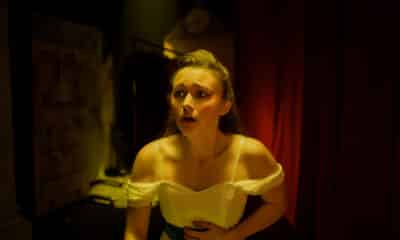

Film Reviews
/ 16 hours ago‘Fear Street: Prom Queen’ review: Dir. Matt Palmer (2025)
It has been four years since Leigh Janiak’s Fear Street trilogy took horror fans...
By Kat Hughes -
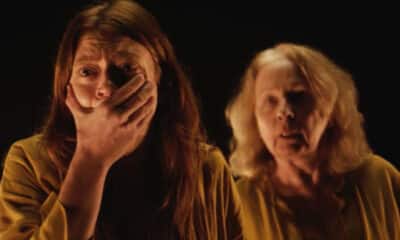

Film Reviews
/ 17 hours ago‘The Surrender’ review: Dir. Julia Max (2025)
As Julia Max’s debut feature, The Surrender, unfolds, the inspirations for the film become...
By Kat Hughes -
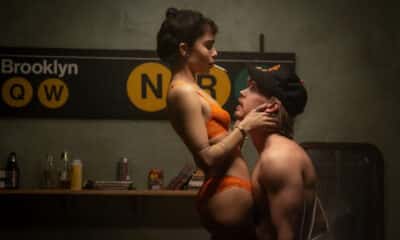

Film Trailers
/ 2 days agoFirst trailer for Darren Aronofsky’s ‘Caught Stealing’
Sony Pictures has released the debut trailer for Darren Aronofsky’s new film Caught Stealing,...
By Paul Heath -
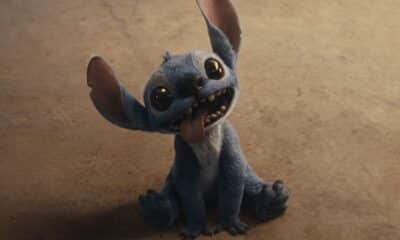

Film Reviews
/ 3 days ago‘Lilo and Stitch’ review: Dir. Dean Fleischer Camp (2025)
Director Dean Fleischer Camp won audiences over with the fantastic Marcel the Shell with...
By Kat Hughes
